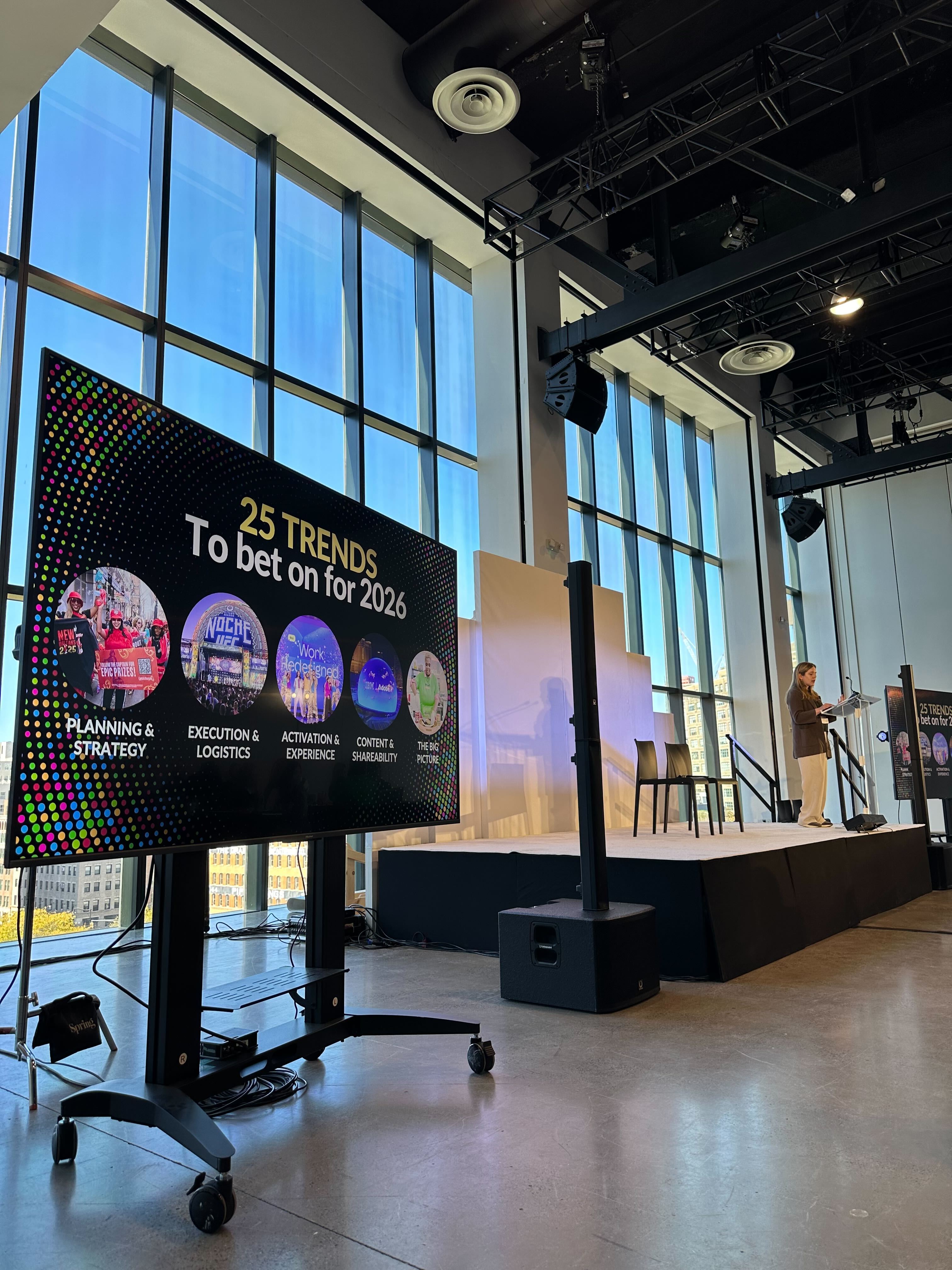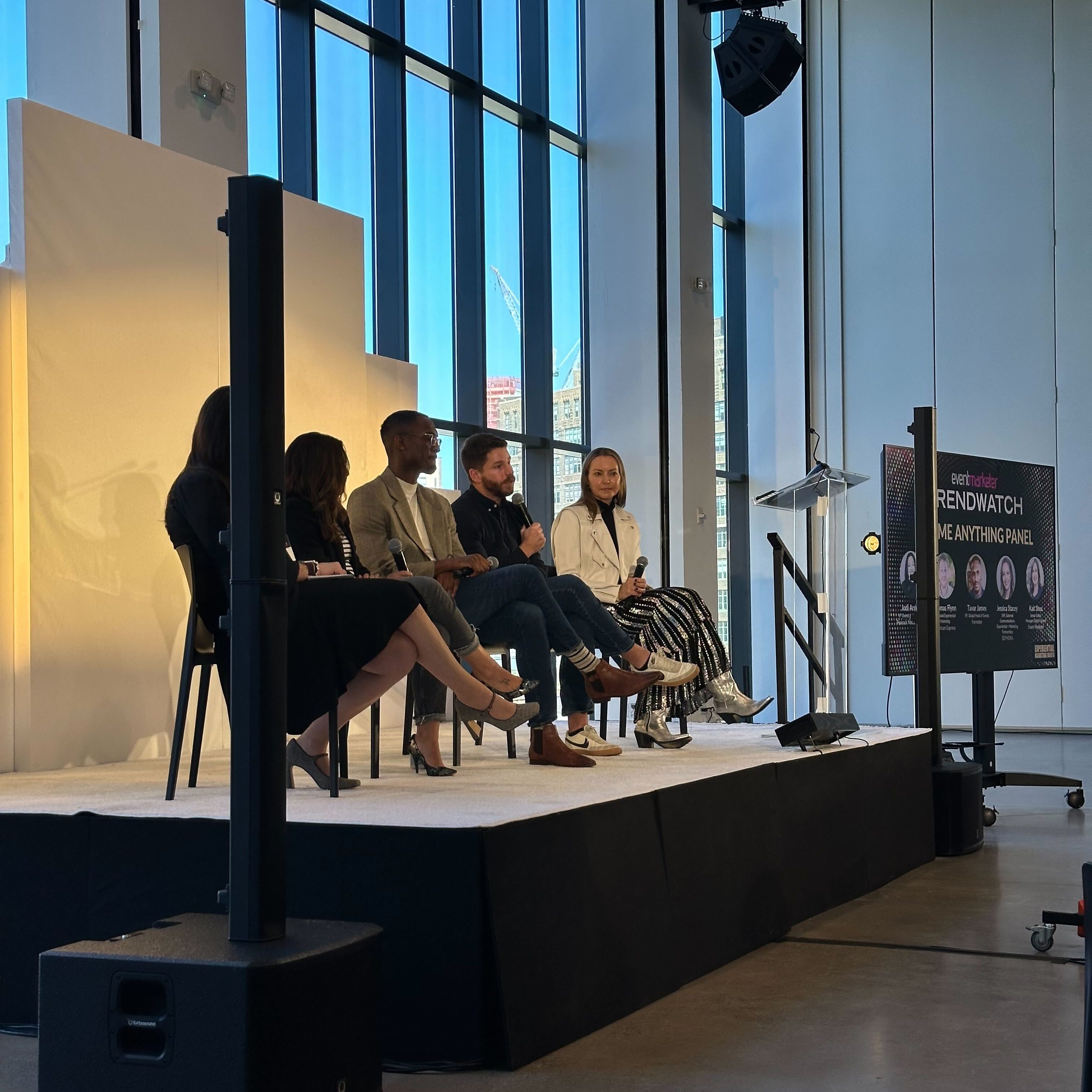Experiential Trends for 2026:
TrendWatch NYC Recap
Overview
FIRST team members Matt Cafritz and George Paraskevas recently attended the insightful TrendWatch event presented by Chief Marketer in New York City. The day dove into the shifts shaping the experiential marketing world for 2026 and beyond. Through the content, one clear theme emerged: the industry is moving away from spectacle for spectacle’s sake and embracing authentic connection, hyper-personalization, and human-centered strategy.
Here are our top insights and takeaways from the event:


Audience and Cultural Shifts: Seeking Meaning Over Status
Younger generations are fundamentally reshaping expectations for events, signaling a shift away from status-driven experiences. They are prioritizing events that offer genuine community, meaningful connection, and authentic interactions.
- “Low-Key and Intimate”: There is a growing preference for “low-key vibes” and authenticity, with intimate gatherings and “micro events” gaining traction, proving that sometimes smaller can be better.
- The Next-Gen Practitioner: Gen Z attendees are entering the events world as “next gen practitioners,” approaching events as learners and co-creators.
- Refined Influence: The role of influence is evolving, as brands are transitioning from merely hiring celebrities to collaborating with them as integrated partners. This addresses consumers who are craving “behind the scenes” access and authentic, short-form storytelling.
- Newstalgia is Comfort: The trend of “Newstalgia” taps into the comforting nature of the past, with notable examples like Airbnb recreating a life-size Polly Pocket compact for humans.
Event Design and Innovation: Technology Enhances, Humanity Connects
Technology and creative strategy are converging to build more meaningful and less didactic experiences.
Personalization and Customization
Events are shifting towards individualized journeys, providing attendees with content and experiences tailored to their specific needs and interests.
- Less Didactic Formats: Events are moving away from traditional instruction. For example, Canva’s World Tour focused on “The Way You Learn Best.” This shift also includes modifying keynotes to be shorter and more conversational in tone.
- The Power of Customization: Brands like Siemens are using data-driven content and tours at CES, and Dreamforce employs a “Trailblazer Map” to personalize attendee journeys.
- Third and Fourth Spaces: Activations are popping up in non-traditional locations (third and fourth spaces) like laundromats or wellness pop-ups, creating more buzz through the introduction of the element of novelty and surprise.
AI Integration
AI agents are becoming foundational tools, but their primary purpose is to free humans to focus on creativity and authenticity.
- Human-Centered AI: AI streamlines ordinary tasks, allowing human creativity to elevate experiences from efficient to extraordinary. By handling routine operations, AI enables humans to focus on the creative and strategic aspects of events.
- AI as a Team Member: AI agents are evolving to become sophisticated members of teams, offering services such as personalized concierge support (CollegeVine) and real-time measurement assistance.
Strategy and Measurement: Proving Value from the C-Suite Down
Strategy and Measurement: Proving Value from the C-Suite Down
Experiential marketing is increasingly driven by rigorous measurement and a strategic focus on high-value engagement, especially in the B2B sector.
- C-Suite Engagement: Gaining leadership buy-in is a key trend. C-suite decisions are heavily influenced by peer conversations, making executive-focused events like Workviva’s Leadership Forum essential.
- Refined ROI: For B2C events, the most critical metrics are shifting with leads and data collection now topping the list. Conversely, for B2B, direct sales lift dropped significantly as the most vital metric.
- The New Metrics: Beyond traditional sales, the focus is “Return on Emotion” and measuring micro-touchpoints for a more holistic view of engagement.
- Agency Best Practices: Agencies are advised to focus on their “superpower,” or what they are uniquely good at, to build credibility and trust. Long-term client relationships that address challenges are valued over one-off, impressive campaigns.
Brand and Agency Insights: Authenticity in Action
Brands are demonstrating their values and purpose through authentic and outward-facing experiences.
- Outward Sustainability: The focus is shifting from internal operational sustainability to external, experiential initiatives that clearly communicate a brand’s environmental and social purpose.
- Permanent Investments: Brands are making permanent, physical investments to establish a lasting brand presence, such as Netflix House and the Prada Cafe.
- Bold Brand Expressions: Activations are becoming “Bold Brand Expressions,” through memorable, shareable stunts, like Doritos’ “Snacktoos” tattoos at the Super Bowl.
- Localized Sponsorships: Brands are connecting with local culture through highly targeted sponsorships, such as Chase’s partnership with a sweet shop for the US Open.
Conclusion
The overarching message that our team gleaned from TrendWatch is clear:
The future of experiential marketing is less about shouting a message and more about co-creating a relevant, unforgettable, and value-driven experience for a highly discerning and connection-hungry audience.
This article was created with insights from the FIRST Team, who attended Event Marketer’s TrendWatch 2025 in New York City.
Contributors
George Paraskevas – Marketing Manager, FIRST
Matt Cafritz – Director, Business Development, FIRST
Engage with FIRST
